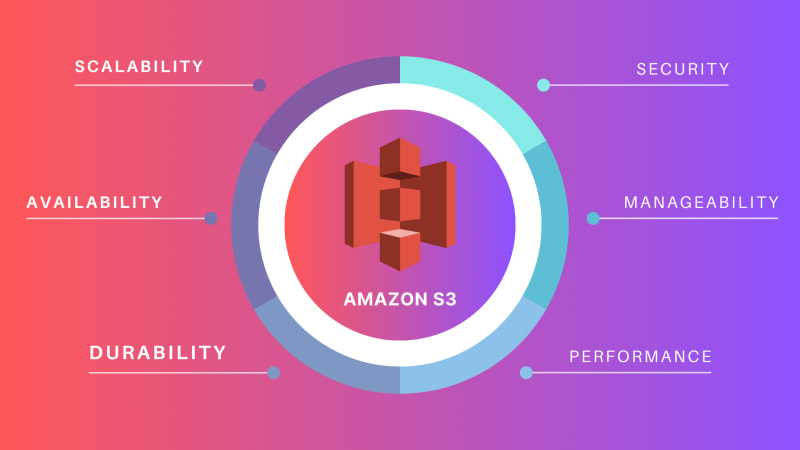Introduction:
In today's digital era, finding a reliable and scalable storage solution is crucial. That's where Amazon S3 comes into play. It's a powerful storage service offered by AWS that has gained immense popularity among individuals and businesses. In this blog, we'll explore the wonders of Amazon S3 and discover its key features that make it a game-changer.

Discovering Amazon S3 -
At its core, Amazon S3 is a simple yet powerful storage service. It stores objects, which are made up of data and metadata, in containers called buckets. Each bucket has a unique identifier called a key, making it easy to retrieve. For example,
You can store an image of Miles Morales in photos/miles-morales.jpg in a bucket called spiderman. Now this image is easily accessible using this URL:
http://spiderman.s3.<region>.amazonaws.com/photos/miles-morales.jpg
Cool right?
Exciting Features of AWS S3:
- Scalability: Picture a storage service that effortlessly adapts to your growing needs, from a few gigabytes to petabytes of data. Amazon S3's scalability knows no bounds, making it the perfect storage solution for any scale of operation.
- Durability and Availability: With a staggering 99.999999999% durability, Amazon S3 ensures your data remains rock-solid and resilient against any data loss. Furthermore, high availability guarantees that your precious data is readily accessible whenever and wherever you need it.
- Security: Protecting your data is paramount, and Amazon S3 takes it to heart. With fine-grained access controls, you have complete authority over who can access your data at both the bucket and object levels. Server-side encryption and access policies through AWS Identity and Access Management (IAM) add an extra layer of security.
- Data Lifecycle Management: Say goodbye to manual data management. Amazon S3's lifecycle policies automate the movement of data between storage classes based on predefined rules. This not only optimizes costs but also ensures efficient storage utilization.
- Versioning and Replication: Mistakes happen, but Amazon S3 has your back. It supports versioning, enabling you to preserve, retrieve, and restore every version of an object. Additionally, cross-region replication ensures data redundancy for disaster recovery and low-latency access across multiple AWS regions.
- Integration with AWS Ecosystem: Amazon S3 plays well with others. Seamlessly integrating with various AWS services, you can unleash the true potential of your applications. From triggering AWS Lambda functions to using Amazon CloudFront for lightning-fast content delivery, the possibilities are endless.
First Task -
Launching a Static Website with Amazon S3:
Now, let's dive into something cool and launch a static website using Amazon S3. It's simpler than you might think!
- Create a new S3 Bucket with a unique name and enable public access.
- Upload your static website files to the bucket.
- Review the uploaded files to ensure everything is in place.
- Configure the bucket properties to enable static website hosting.
- Copy the provided bucket policy for granting access to anonymous users.
- Voila! Your website is ready. Access it using the web address provided in the static website section.
Conclusion:
Amazon S3 is a powerful storage solution that offers scalability, durability, security, and seamless integration with other AWS services. It opens up a world of possibilities for individuals and businesses to harness the full potential of their data. Embrace the coolness of Amazon S3, unleash your creativity, and embark on an exciting journey with limitless storage capabilities.
References & Blogs:
- Amazon S3 - Product page
- How Canva Saves Over $3 Million Annually in Amazon S3 Costs - Link to the blog
- Static Waves Website - Git Link





Top comments (0)